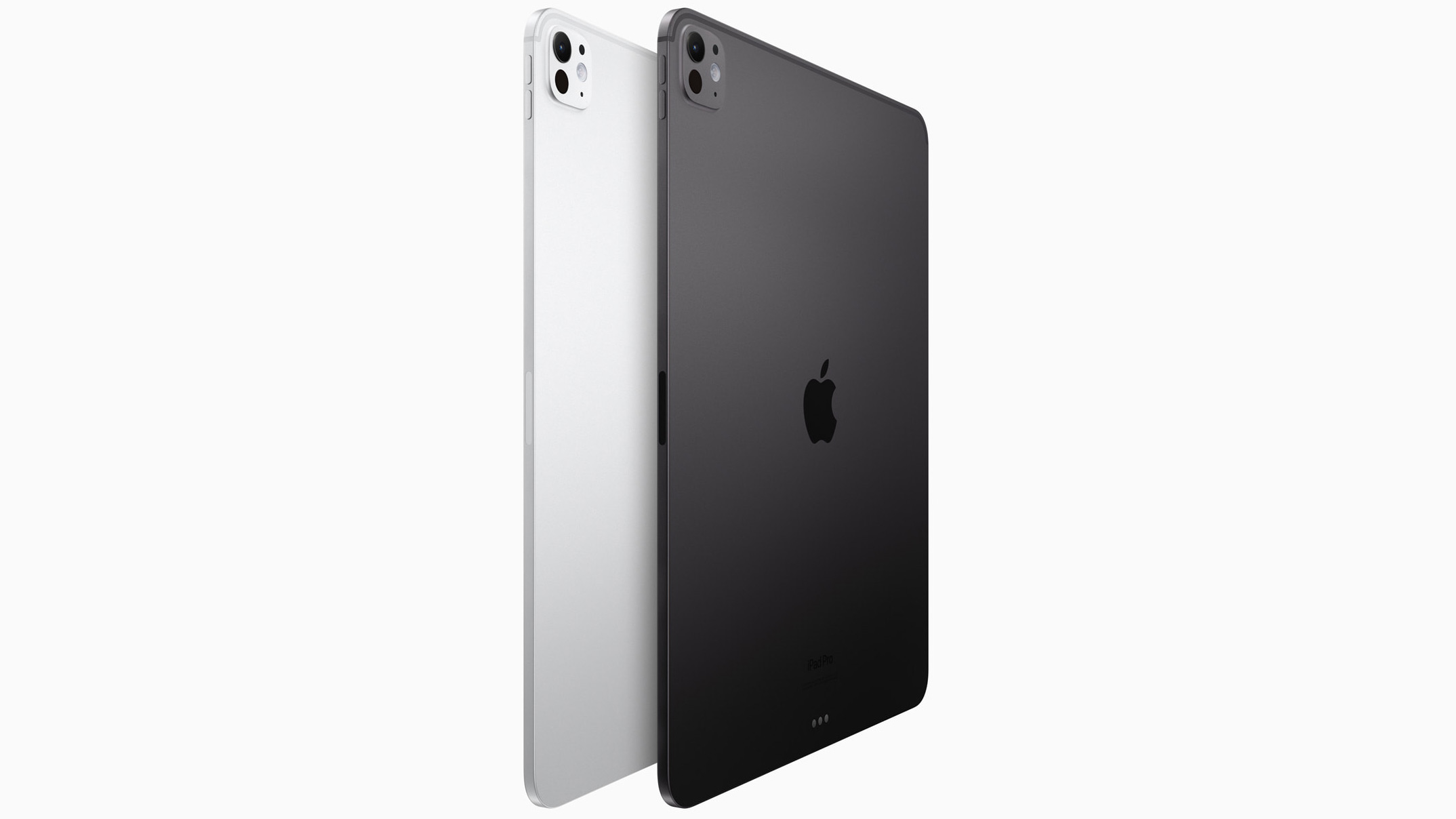iPad extravaganza: iPad Air goes BIG, iPad Pro goes THIN and M4—plus there's a PRICE CUT!
After two years of silence, the iPad range has received a massive update — are small laptops finally at risk?

After a longer than usual wait, Apple made today a big day for the iPad, with both of the photographer's favourite models getting attention on the same day for the first time ever as the iPad Air series and iPad Pro series got major updates.
Many photographers will be very excited by the arrival of a layered Tandem OLED screen (which Apple is calling Ultra Retina XDR). It has up to 1,000 nits by putting two OLED panels atop each other (with peak brightness of 1,600 nits for HDR content). This offers darker blacks and power saving, which the company has taken advantage of by reducing weight and thickness in batteries. Apple have reduced the iPad to 5.1mm (5.3mm for the 11-inch), making it thinner than the iPod Nano, and given the screen a matt finish.
The new device is the first to be powered by Apple's M4 processor, which hasn't even made it to the Mac line yet. The 3nm chip has an "entirely new display engine," as well as 4 performance and 6 efficiency cores, plus 10 GPU cores. Apple say it'll be "up to" 4x faster than M2, or deliver the same performance as M2 with half the power, and boasts hardware ray-tracing acceleration.
The camera is still 12 megapixel, but gets an 'adaptive truetone flash' – the portrait camera is moving to the landscape edge like the iPad air (and every other laptop ever), and goes with a new magic keyboard that has a function row. It looks a lot like (and feels like, they said) using a MacBook.
These, though, come with a massive sting in the tail in the form of a price increase – the new. iPad Pro starts at 256GB at $999 / AU$1,699 11-inch and $1,299 / AU$2,199 for the 13-inch. They'll be available next week.

Oh, and there's ANOTHER new Apple Pencil too. Apple Pencil Pro. It has a squeezable side and sensor, a haptic engine, a gyro sensor so you can roll it to select tools, and support for Apple's Find My, as well as charging on the side of the iPad Pro. (The pencil will work with the iPad Air too...)

The more cost-conscious choice in the iPad range has long been the iPad Air, which offered a lesser camera but still a meaty processor. One of the main reasons that creatives like photographers and videomakers had to turn away, however, was that Apple didn't offer a large-screen version. That, however, has changed, with the arrival of the a 12.9-inch version (potentially shooting the Pro in the foot for a lot of wiser consumers!)
The best camera deals, reviews, product advice, and unmissable photography news, direct to your inbox!
The iPad Air is now powered by M2, with 8-core CPU / 10-core GPU, nearly 50% faster than the M1 version according to Apple. The front-facing camera is on the landscape edge, and Wi-Fi 6E and 5G is supported.
Has the event answered the real question, though, which ultimately remains "Will the iPad replace the laptop?" The problem remains that it's not really in Apple's interest to encourage people to buy one device when they could buy two.
So what updates has iPad OS got, if any? Well there are a customizable lock screen, interactive widgets, messages with emoji stickers, Stage Manager for overlapping windows (hmm.... now that sounds like a computer....) and Visual Look Up among new AI features, but it won't be until WWDC – a month or so away – that we find out if there will be anything to really use that trackpad with haptic feedback.

The iPad Air will start at 128GB storage, but stays at $599 / AU$999 base price, or $799 / AU$1,299 for the 13-inch version. There are storage options up to 1TB, too.
Finally, iPad 10th Gen is being cut in price to a starting price of just $349 in the US only (and the iPad Mini remains untouched by today's news).
Pre-orders US:
Pre-order iPad Pro M4 or iPad Air 6 from B&H (US)
Pre-order iPad Pro M4 or iPad Air 6 from Amazon (US)
Pre-orders UK:
Pre-order iPad Pro M4 or iPad Air 6 from Apple (UK)
Pre-orders AU:
Pre-order iPad Pro M4 or iPad Air 6 from Apple (AU)
Pre-order iPad Pro M4 or iPad Air 6 from JB Hi-Fi (AU)

With over 20 years of expertise as a tech journalist, Adam brings a wealth of knowledge across a vast number of product categories, including timelapse cameras, home security cameras, NVR cameras, photography books, webcams, 3D printers and 3D scanners, borescopes, radar detectors… and, above all, drones.
Adam is our resident expert on all aspects of camera drones and drone photography, from buying guides on the best choices for aerial photographers of all ability levels to the latest rules and regulations on piloting drones.
He is the author of a number of books including The Complete Guide to Drones, The Smart Smart Home Handbook, 101 Tips for DSLR Video and The Drone Pilot's Handbook.
